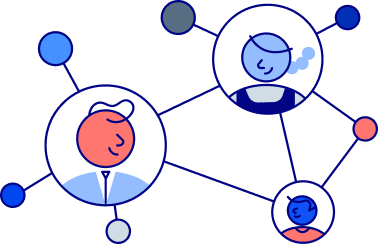Recent events have shined a spotlight on the problem of systemic injustice in the United States.
The business community has responded admirably, with initiatives to help break down barriers and close the opportunity gap for those from underrepresented communities. While not often implicitly expressed, much of the focus around diversity, equity and inclusion (DEI) has been on tackling the biases that have disadvantaged domestic minorities for centuries.
When employers think about diversity, they often think about getting the right mix of African-Americans, Asian-Americans and Latino-Americans, for example.
We should all commend businesses for these efforts while also encouraging leaders to recognize international students in their DEI initiatives. International students, especially those of color, also face systemic barriers that deserve our attention. Furthermore, they act as a force multiplier in DEI, supercharging your efforts to build a high-performance team that approaches problems from multiple angles.
Why diversity is great for business
Like your stock portfolio, diversity increases performance. In 2017 Boston Consulting Group surveyed 1,700 companies in eight countries to research the work benefits of diversity. The group’s study established that diverse teams drive innovation and that they produce 19 percent more revenue than their non-diverse counterparts.
Hiring international students fulfills a whole host of diversity initiatives, from culture, to race to language and nationality, too.
Cultural diversity
Cultural diversity is a bit of a catch-all. As such, when people talk about diversity in general, they are often talking about cultural diversity. That’s because, depending on your policies and definitions, it can includes such identifiers as:
- Age
- Gender
- Sexuality
- Race/Ethnicity
- Abilities and disabilities
- Military experience
- and more!
The biggest benefit of cultural diversity is that it results in diverse thinking styles and experiences, the very qualities that can help your team solve a sticky problem, expand to other markets or develop new technologies.
Racial and ethnic diversity
Representation matters. And a racially and ethnically diverse workforce accomplishes two objectives. First, it helps you recruit and retain the most talented people. When minority job prospects can see themselves in your existing workforce, they feel more welcomed. Second, it improves your outreach to clients and prospective clients for the very same reason. It’s about creating a welcoming environment for everyone.
If this all sounds hypothetical, consider this: McKinsey & Company identified a company’s racial and ethnic diversity as one of the key predictors of financial performance. They found that companies in the top quartile for racial and ethnic diversity are 35 percent more likely to have financial returns above their respective national industry medians.
Linguistic diversity
Business is about building relationships. The more languages your company speaks, the more relationships you can build.
Multilingual employees help expand businesses regionally and internationally. They can help recruit and train new staff. Some executives report that multilingual employees are naturally more creative and better problem solvers.
Switzerland’s multilingual heritage gives the country a competitive advantage in business that economists estimate accounts for 10 percent of the country’s GDP.
National diversity
The top 10 countries of origin of international students in the U.S. span East Asian, South Asia, North America, South America, and the Middle East. Like linguistic diversity, national diversity is important, especially for international and multinational corporations. Employees who understand a country’s culture, language, politics and government can be incredibly helpful when it comes to expanding into new markets or better understanding your existing foreign markets.
But isn’t it expensive and difficult to hire international students?
Perhaps one reason international students often get overlooked in DEI decision making is that there is a misconception that hiring them is a headache.
This is one of the many common myths around hiring international students. For early career opportunities after graduation, there’s cost and action required, such as sponsorship to hire an international student for up to three years on OPT.
The Takeaway
It’s clear: international students represent all levels of diversity and should be part of your diversity and inclusion strategy. Whether in sourcing and engaging students, crafting your employer brand, and ensuring a positive candidate experience, designing for international students will pay dividends.























